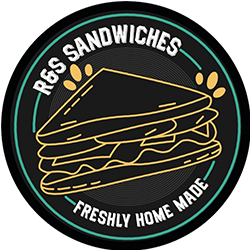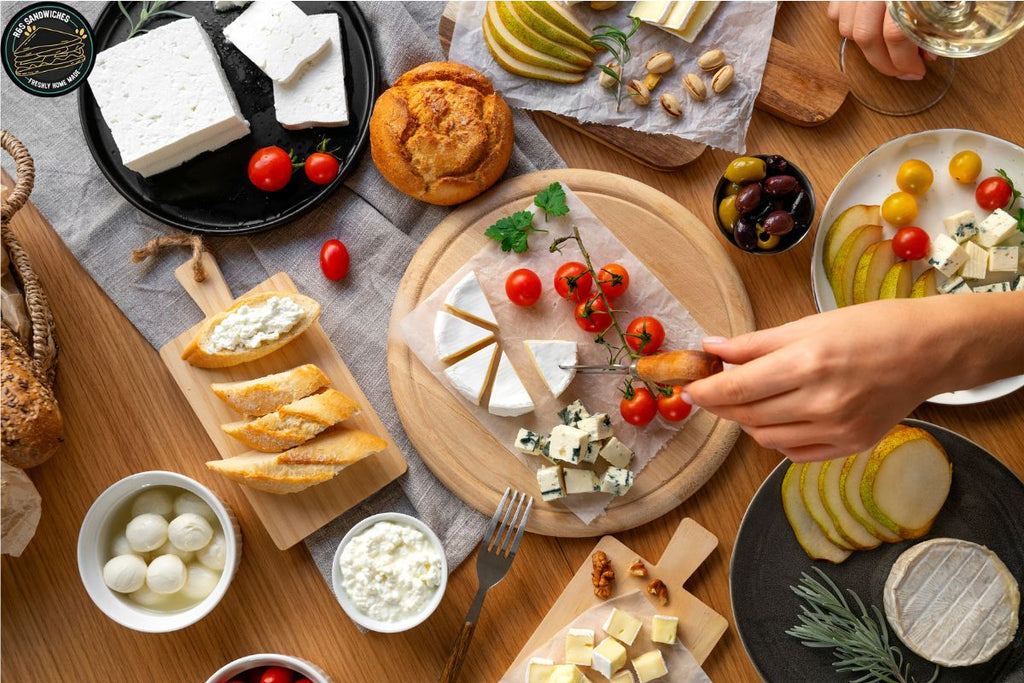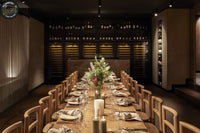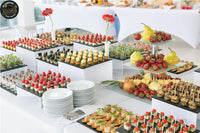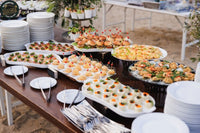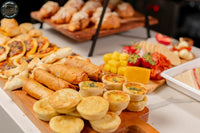Creating a cheese platter is an art form that brings together a variety of textures, flavors, and colors, making it a standout feature at any gathering. Whether you're hosting a small get-together or a large celebration, a well-crafted cheese platter can impress your guests and provide a delightful tasting experience. In this blog, we'll explore the steps to create a stunning cheese platter, including selecting the right cheeses, accompaniments, and presentation tips.
Selecting the Cheeses
The foundation of any great cheese platter is the cheese selection. Aim for a diverse range of cheeses that offer different textures and flavors. Here are some categories to consider:
-
Soft Cheeses:
-
Brie: Creamy, buttery, and mild.
-
Camembert: Similar to Brie but with a slightly stronger flavor.
-
Goat Cheese (Chevre): Tangy and creamy.
-
-
Semi-Soft Cheeses:
-
Gouda: Mild to strong flavor with a smooth texture.
-
Havarti: Buttery and slightly sweet.
-
Fontina: Mild, nutty, and slightly tangy.
-
-
Firm Cheeses:
-
Cheddar: Sharp and crumbly.
-
Gruyere: Nutty and slightly sweet.
-
Manchego: Sheep's milk cheese with a distinct flavor.
-
-
Blue Cheeses:
-
Roquefort: Tangy and slightly spicy.
-
Gorgonzola: Creamy and piquant.
-
Stilton: Rich and robust.
-
-
Aged Cheeses:
-
Parmesan: Hard and granular with a sharp taste.
-
Aged Gouda: Butterscotch-like flavor with a crumbly texture.
-
Pecorino Romano: Salty and sharp, made from sheep's milk.
-
Accompaniments
The right accompaniments can enhance the flavors of your cheese selection. Here are some ideas to complement your cheeses:
-
Bread and Crackers:
-
Offer a variety of options such as baguette slices, multigrain crackers, and water crackers. These provide a neutral base that won't overpower the cheese.
-
-
Fruits:
-
Fresh fruits like grapes, apple slices, and pear slices add sweetness and juiciness.
-
Dried fruits like apricots, figs, and dates provide a concentrated sweetness that pairs well with strong cheeses.
-
-
Nuts:
-
Almonds, walnuts, and pistachios add a crunchy texture and earthy flavor.
-
Candied nuts can introduce a sweet and savory element.
-
-
Spreads and Dips:
-
Honey and fruit preserves offer a sweet contrast to salty and tangy cheeses.
-
Mustards and chutneys can provide a spicy kick.
-
-
Cured Meats:
-
Prosciutto, salami, and chorizo add a savory and smoky element that pairs well with many cheeses.
-
-
Pickles and Olives:
-
Pickled vegetables and olives add a briny, tangy contrast that can cleanse the palate between cheese varieties.
-
Presentation Tips
A visually appealing cheese platter can elevate the entire experience. Here are some tips for creating a beautiful presentation:
-
Choose the Right Board:
-
Use a wooden or marble board for an elegant look. The size of the board should match the quantity of your ingredients.
-
-
Arrange the Cheeses:
-
Start by placing the cheeses on the board, spacing them out to leave room for accompaniments. Cut a few slices or wedges from each cheese to make it easy for guests to serve themselves.
-
-
Add Height and Dimension:
-
Use small bowls or ramekins for dips, spreads, and nuts to add height and dimension to the platter.
-
-
Fill in the Gaps:
-
Arrange fruits, nuts, and crackers around the cheeses, filling in any gaps. Aim for a balanced look with a mix of colors and textures.
-
-
Garnish:
-
Fresh herbs like rosemary, thyme, or edible flowers can add a pop of color and a fresh aroma.
-
-
Label the Cheeses:
-
Use small flags or labels to identify each cheese. This helps guests know what they're tasting and can spark conversation.
-
Pairing with Beverages
A cheese platter can be complemented by a variety of beverages. Here are some pairing suggestions:
-
Wine:
-
White Wines: Sauvignon Blanc, Chardonnay, and Riesling pair well with soft and semi-soft cheeses.
-
Red Wines: Pinot Noir, Merlot, and Cabernet Sauvignon complement firm and aged cheeses.
-
Sparkling Wines: Champagne and Prosecco are versatile and pair well with a range of cheeses.
-
-
Beer:
-
Light beers like Pilsners and wheat beers work well with mild cheeses.
-
Strong ales and stouts pair nicely with bold, aged cheeses.
-
-
Non-Alcoholic Options:
-
Sparkling water with a twist of lemon or lime.
-
Freshly brewed iced tea or a selection of flavored waters.
-
Final Touches
Before serving your cheese platter, give it a final once-over. Make sure everything is in place, the cheeses are at the right temperature (most cheeses taste best at room temperature), and there are enough utensils for guests to use. Remember, the goal is to create an inviting and delicious spread that encourages exploration and enjoyment.
Order Cheese Platters Online
If you're looking for an ideal place to order cheese platters online, look no further than R&S Sandwiches. We are one of the leading catering companies in Melbourne, offering a wide range of catering options!
Whether you're planning a corporate event, a family gathering, or a special celebration, R&S Sandwiches has the perfect catering solution to meet your needs. Visit our website today to explore our menu and place your order.
Creating a cheese platter is a rewarding experience that can bring joy to any occasion. With the right selection of cheeses, accompaniments, and presentation, you'll be able to craft a platter that's not only delicious but also visually stunning. And if you ever need a hassle-free, expertly crafted cheese platter, R&S Sandwiches is here to help.
